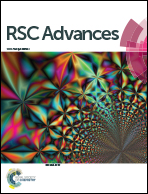Poly(caprolactone)–poly(ethylene glycol)–poly(caprolactone) (PCL–PEG–PCL) nanoparticles: a valuable and efficient system for in vitro and in vivo delivery of curcumin
Abstract
Among the potent anticancer agents, curcumin is known as an effective agent against many different types of cancer cells. Its clinical applications have been limited because of hydrophobicity, low gastrointestinal absorption and fast metabolism. In the present study, curcumin was encapsulated within PCL–PEG–PCL micelles through a single-step nano-precipitation method, leading to the creation of CUR/PCL–PEG–PCL micelles. The PCL–PEG–PCL copolymer was characterized in vitro using 1H NMR, FTIR, DSC and GPC techniques. PCL–PEG–PCL copolymers with curcumin were self-assembled into micelles in aqueous solution. The resulting micelles were characterized further using various techniques such as DLS and AFM. The anti-tumor properties of curcumin-loaded micelles were evaluated in cancer cell lines both in vitro and in vivo. The results showed the successful formation of spherical curcumin-loaded micelles. The encapsulation efficiency of curcumin was 83 ± 1.29%. The results of AFM revealed that the micelles have spherical shapes with a size of 70.34 nm. In vitro release of curcumin from curcumin-entrapped micelles followed a remarkably sustained release profile. The curcumin-loaded micelle showed an efficient physical stability and a high loading efficiency. The results of in vivo experiments indicated that the curcumin-loaded micelles significantly reduce the tumor size, prolong the survival and increase splenocyte proliferation and IFN-γ production as well as significantly decreasing the IL-4 production. The results indicate that the successful formulation of curcumin loaded PCL–PEG–PCL micelles had a significant chemopreventive effect on cancer cell lines through cell proliferation inhibition, apoptosis induction and anti-tumor immunity stimulation.


 Please wait while we load your content...
Please wait while we load your content...